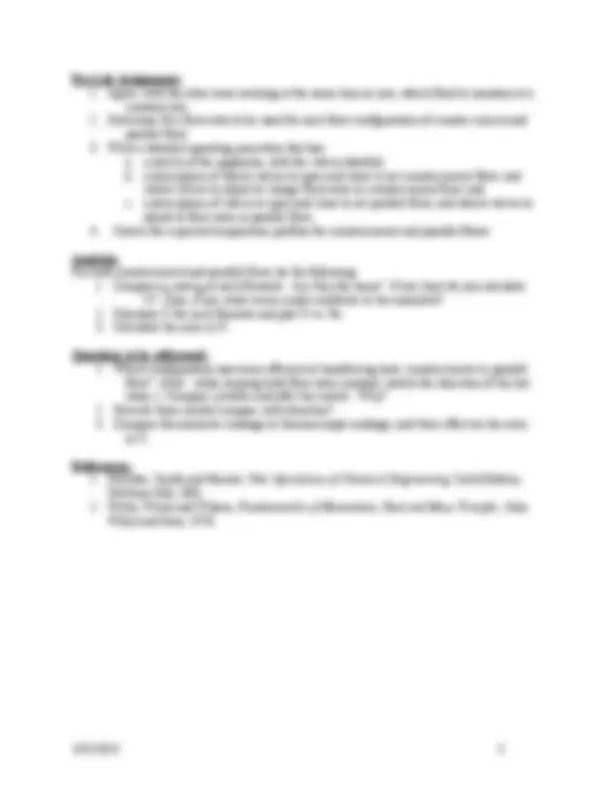



Study with the several resources on Docsity

Earn points by helping other students or get them with a premium plan


Prepare for your exams
Study with the several resources on Docsity

Earn points to download
Earn points by helping other students or get them with a premium plan
Community
Ask the community for help and clear up your study doubts
Discover the best universities in your country according to Docsity users
Free resources
Download our free guides on studying techniques, anxiety management strategies, and thesis advice from Docsity tutors
An experiment conducted in ce 328 during spring 2003 to investigate the impact of flow conditions and configurations on heat transfer through a double pipe heat exchanger. Students were required to determine the overall heat transfer coefficient for both countercurrent and parallel flows. Background theory, a pre-lab assignment, and an analysis of the expected results.
Typology: Study notes
1 / 3

This page cannot be seen from the preview
Don't miss anything!


CE 328 Spring 2003
Objective: To study and evaluate the effects of flow conditions and flow configurations on the rate of heat transfer through thin walled tubes. To determine the overall heat transfer coefficient for the double pipe heat exchanger for countercurrent flow and parallel (or co-current) flow.
System: The heat exchanger consists of two thin wall copper tubes mounted concentrically on a panel. The flow of water through the center tube can be reversed for either countercurrent or parallel flow. The hot water flows through the center tube, and cold water flows in the annular region.
Background and Theory: A single-pass heat exchanger is one through which each fluid runs through the exchanger only once. An additional descriptive term identifies the relative directions of the two streams. Parallel (or co-current) flow is the term for fluids that flow in the same direction. Countercurrent flow describes fluids that flow in opposite directions.
A simple, first law of thermodynamics for each stream gives:
q = m & (^) c cpc ( T (^) co − Tci ) (1)
for the cold fluid, and
q = m &^ h cph ( T (^) hi − Tho ) (2)
for the hot fluid, where q = heat, J m & = mass flow rate, kg/s T = temperature, K cp = heat capacity, J/kg-K Subscripts c and h denote cold and hot fluids, respectively Subscripts i and o denote fluid inlet and outlet, respectively
The following definitions are given for parallel flow:
ho co
hi ci T T T
2
1 ∆
For countercurrent flow:
hi co
ho ci T T T
2
1 ∆
The energy transfer between the two fluids is given by:
1
2
2 1 ln T T
q UA ∆
where U = overall heat transfer coefficient, W/m^2 -K A = heat exchange area, m^2